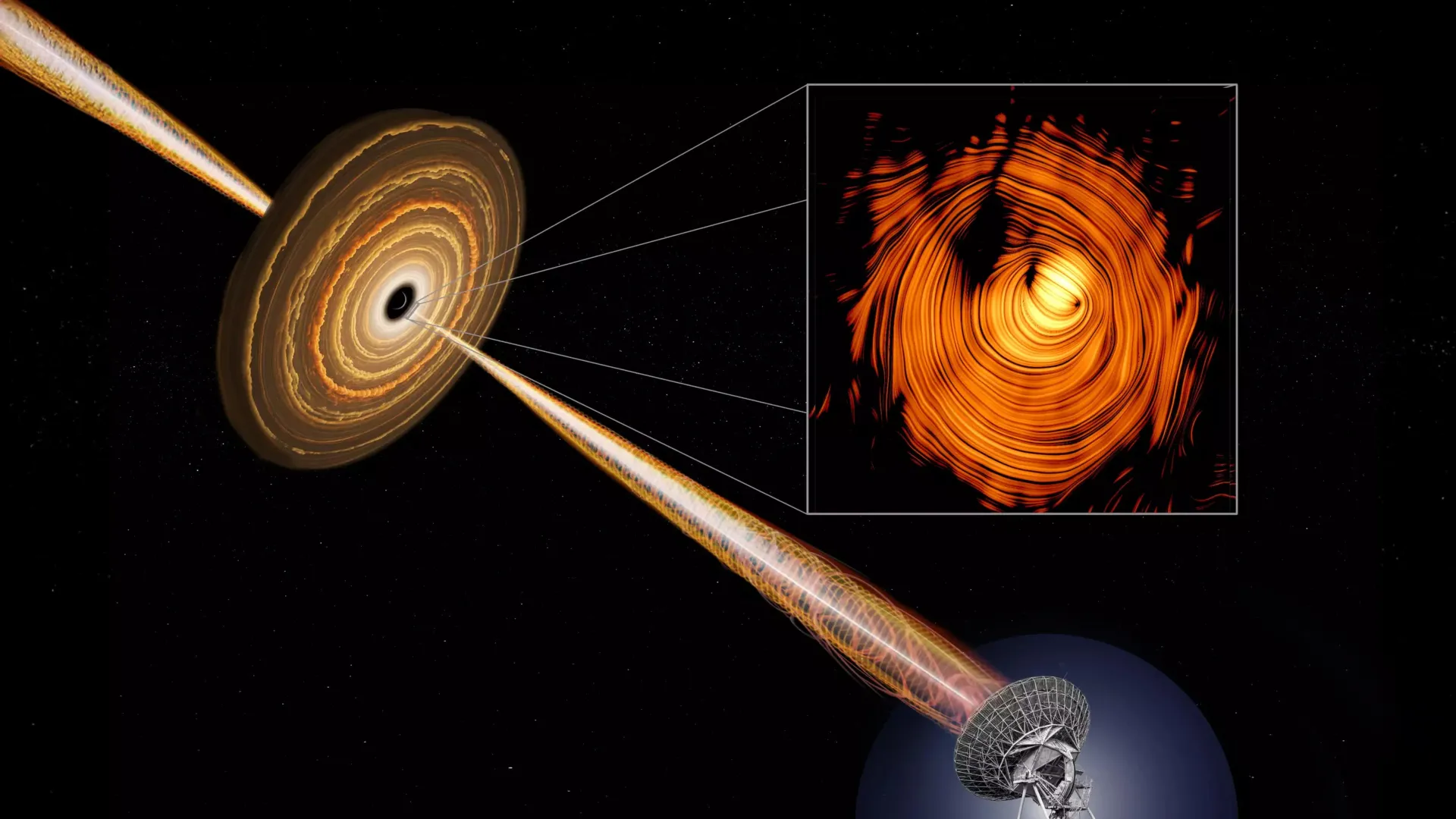Now Reading: Astronomers Uncover Mysterious Engine in Space’s ‘Eye of Sauron
-
01
Astronomers Uncover Mysterious Engine in Space’s ‘Eye of Sauron
Astronomers Uncover Mysterious Engine in Space’s ‘Eye of Sauron

Quick Summary
- Revelation of Cosmic Jet Origin: Astronomers have captured detailed images of the blazar PKS 1424+240, revealing a ring-shaped (toroidal) magnetic field that may explain extreme energy phenomena.
- Particle Acceleration and Neutrinos: The discovery links these magnetic fields to particle acceleration, which explains high-energy gamma radiation and neutrino production.
- Unique Observational Limits: The blazar’s alignment toward Earth boosts it’s observed brightness while creating an optical illusion of a slow-moving jet.
- Importance in Multimessenger Astronomy: This breakthrough strengthens the understanding of relativistic jets, high-energy neutrinos, and the role magnetic fields play in shaping cosmic accelerators.
- Technological Milestone: Achieved using 15 years of data from the Very Long Baseline Array (VLBA), developed under long-term initiatives like MOJAVE and MuSES.
Indian Opinion Analysis
The findings regarding PKS 1424+240 highlight significant progress in studying active galactic nuclei with supermassive black holes. Although astronomical discoveries may seem abstract or removed from day-to-day relevance, they carry profound implications for India’s growing scientific engagement in space research. India’s academic institutions involved in astrophysical studies could benefit by collaborating with international efforts such as MOJAVE or MuSES programs.
As India develops its own capabilities through projects like AstroSat or investments toward advanced telescopes, these breakthroughs underscore what collaborative efforts can achieve when cutting-edge observation techniques are applied over extended periods. Moreover, lessons drawn from deciphering enigmatic features such as blazars strengthen India’s aspirations to contribute meaningfully to global multimessenger astronomy-a promising frontier that connects varied cosmic signals across disciplines ranging from neutrinos to electromagnetic waves.
india’s priority should be creating groundwork for ultra-sensitive imaging infrastructures similar to VLBA through regional cooperation or partnerships. These technologies are essential not only for deep-space exploration but also for enhancing computational models used within diverse physics applications.

























